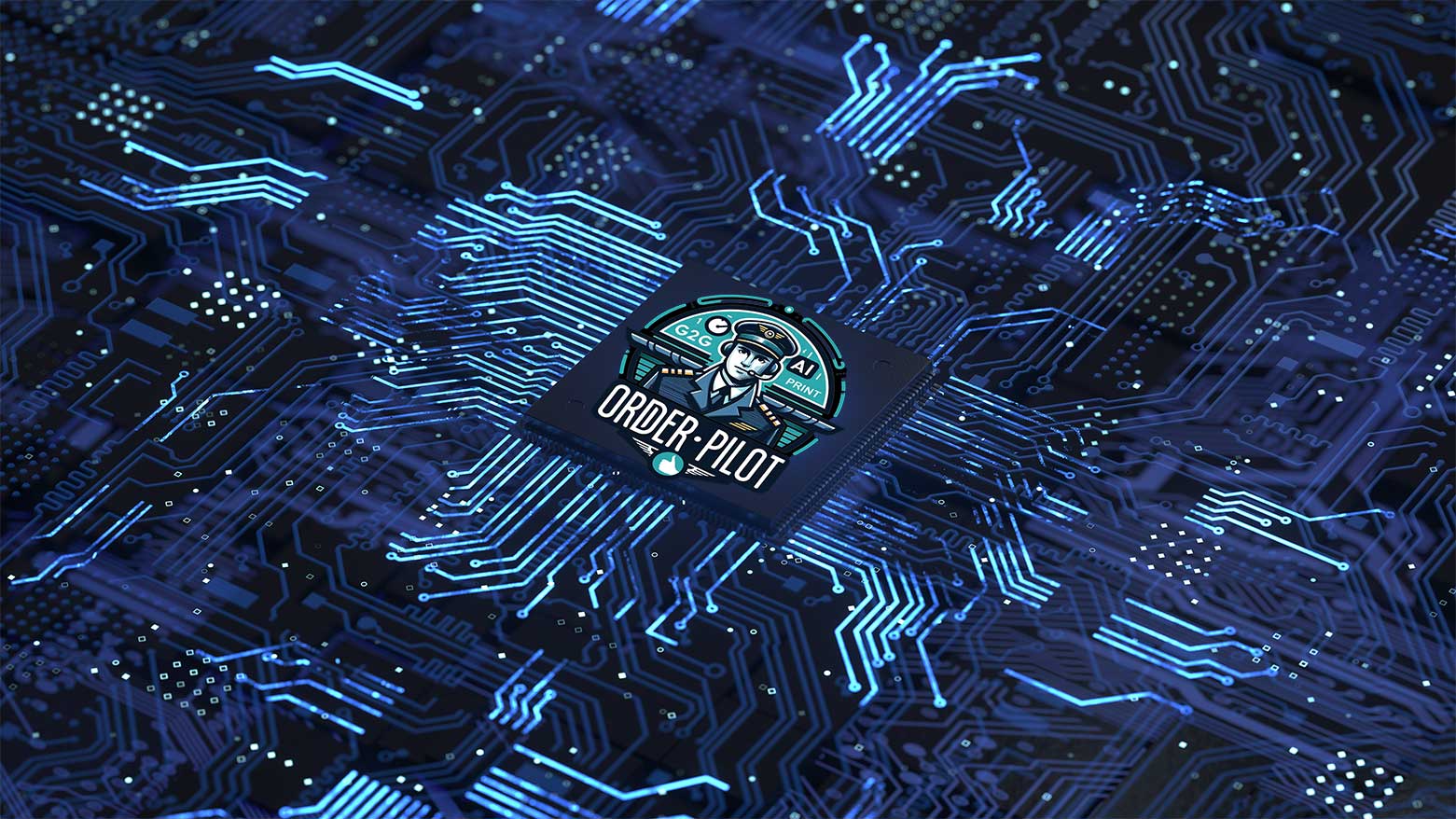Strategies for Success
In the fast-paced world of commercial printing, efficient communication and workflow management are critical for meeting deadlines and ensuring customer satisfaction. Many printing companies have traditionally relied on email for job submission and approval, but this method has proven frustrating and time-consuming for staff and customers. As a print shop manager, you may know that more effective solutions, such as SaaS (Software as a Service) platforms, can streamline the entire process. However, transitioning to a new system can be met with reluctance from your staff and customers, who may be concerned about how this software will work and whether it will genuinely improve the current email-based system. In this blog post, we will explore the reasons behind this resistance to change, discuss the relevance of Daniel Kahneman’s theory on left-brain-right-brain decision-making, and suggest practical strategies for overcoming resistance and successfully implementing a new workflow solution in your print shop.
Understanding Staff Reluctance to Change:
Change can be challenging for many people, and it’s essential to recognize and address the factors contributing to your staff’s hesitation to adopt a new workflow solution. By understanding their reluctance, you can develop a strategy to address their concerns and ease the transition to the new system.
- Fear of the unknown: One of the most common reasons people resist change is fear of the unknown. Staff members may need help with how the new SaaS software will affect their daily routines, job responsibilities, and ability to complete tasks efficiently. To alleviate this fear, provide detailed information about the software and its benefits to help them understand what to expect.
- Comfort in familiar routines: AI tools are increasingly crucial in prepress, especially color management. For example, some software can analyze images and identify color issues, making it easier for prepress professionals to correct them. Some AI tools can help printers optimize ink usage, reduce waste, and minimize production costs.
- Concerns about job security: Introducing new technology in the workplace can create anxiety about job security. Employees may worry that the new software will automate their roles or lead to downsizing. To counter this fear, reassure your staff that the primary goal of the SaaS software is to enhance efficiency and productivity, not to eliminate jobs. Emphasize that their expertise and skills remain valuable in the organization.
- Worries about the learning curve: Adopting new software often comes with a learning curve, and your staff may be concerned about the time and effort required to become proficient with the new system. To address this, provide comprehensive training and support during the transition period, ensuring they will be well-equipped to use the software effectively.
The Role of Daniel Kahneman’s Theory in Reluctance to Change:
Daniel Kahneman, a renowned psychologist, and Nobel Prize winner, has significantly contributed to understanding human decision-making processes through his work on cognitive biases and heuristics. His theory on the dual-process model of the brain, which involves the interaction between the fast, intuitive “System 1” (right brain) and the slower, more analytical “System 2” (left brain), can help explain why staff members may be hesitant to embrace new workflow solutions.
- Dual-process model overview: Kahneman’s dual-process model suggests that humans use two systems to make decisions. System 1 operates quickly and automatically, relying on intuition, emotions, and cognitive shortcuts. System 2, conversely, is more deliberate and analytical, employing logic and reasoning to make decisions. The two systems often work together, but their interaction can sometimes lead to biased judgments and resistance to change.
- Cognitive biases and decision-making processes: When faced with a new workflow solution, staff members may rely on their intuitive System 1 to quickly evaluate the change based on prior experiences and emotions. This can result in cognitive biases, such as the status quo bias (favoring the current state) and loss aversion (fearing potential losses more than appreciating potential gains), contributing to their reluctance to adopt the new software.
- The impact of confusing or overwhelming information: Introducing a new workflow solution can involve presenting staff with too much information about the software’s features and benefits. If this information is presented in a confusing or overwhelming manner, it can trigger the staff’s System 2 to work harder to process and analyze the information. This increased cognitive effort can make the change appear even more challenging and encourage staff to embrace the new solution.
To counter these effects, it’s crucial to communicate information about the new software in a clear, concise, and digestible manner. Break down complex concepts into simpler terms, and avoid overwhelming staff with too much information at once. By doing so, you can facilitate a smoother transition to the new workflow solution and alleviate staff reluctance to change.
Addressing the Reluctance to Change:
Understanding the reasons behind staff reluctance to change is the first step in overcoming resistance. To ensure a successful transition to the new SaaS software, addressing their concerns and doubts is essential, helping them see the benefits of the new workflow solution and feel confident about adopting it.
- Providing clear and concise information about the new SaaS software: Presenting information clearly and easily digestibly is crucial for overcoming reluctance to change. Create user-friendly materials, such as brochures, videos, and webinars, that explain the features and benefits of the new software. Focus on breaking down complex concepts into simpler terms and using visuals to aid comprehension.
- Emphasizing the benefits and improvements over the current email system: Highlight the advantages of the new SaaS software compared to the existing email-based workflow. Show your staff and customers how the new system will save time, reduce errors, and improve efficiency. To show how the change can benefit your organization, share stories and feedback from others who have successfully implemented similar solutions.
- Addressing staff and customer concerns and answering their questions: Encourage open communication by creating opportunities for staff and customers to express their concerns and ask questions about the new software. Hold Q&A sessions, town hall meetings, or informal discussions to address their doubts and provide reassurance. Listen carefully to their concerns and respond to their needs, which will help build trust and confidence in the new solution.
Strategies for Overcoming Reluctance to Change:
To successfully implement the new SaaS software and ensure a smooth transition, it’s important to employ effective strategies that help staff and customers overcome their reluctance to change. Here are some practical approaches to facilitate the adoption of the new workflow solution:
- Involving staff and customers in the decision-making process: Inclusion plays a significant role in overcoming resistance to change. Hearing their opinions and concerns makes staff and customers more likely to support the new solution. Involve them in decision-making by seeking their input and suggestions on the software’s features and implementation strategies. This sense of ownership can help alleviate their reluctance to change.
- Offering training and support for the new SaaS software: Ease the transition to the new system by providing comprehensive training and support for your staff and customers. Develop tailored training programs that cater to different learning styles and skill levels, ensuring everyone is equipped with the knowledge and skills to use the software effectively. Offer ongoing support through a dedicated helpdesk, user guides, and troubleshooting resources to assist with any issues arising during the implementation process.
- Creating a sense of urgency for change and highlighting the potential risks of not adopting the new solution: Demonstrate the necessity of adopting the new SaaS software by emphasizing the risks associated with relying on the outdated email-based system. Discuss potential issues such as increased errors, delayed project completion, and customer dissatisfaction, and explain how the new solution will help mitigate these risks. Creating a sense of urgency can motivate staff and customers to support the change.
- Celebrating small successes and milestones throughout the transition: Recognizing and celebrating small achievements during the implementation process can boost morale and encourage continued support for the new system. Share success stories, acknowledge individual efforts, and celebrate milestones like completing training or projects using the latest software. This positive reinforcement can help maintain enthusiasm and commitment to the change.
Ensuring a Smooth Transition to the New Workflow Solution:
After addressing the reluctance to change and employing strategies to overcome resistance, ensuring a smooth transition to the new SaaS software is crucial. By following these steps, you can minimize disruption and optimize the implementation process for your staff and customers:
- Implementing the new SaaS software in phases: Instead of introducing the new system simultaneously, consider implementing it in phases. Start by introducing the software to a smaller group of employees or customers, familiarizing them with its features and functions. Gradually expand the implementation to include more users while incorporating feedback from the initial group to improve the process. This phased approach can help manage the learning curve and reduce the stress associated with a sudden change.
- Providing ongoing support and guidance for staff and customers: Offer continuous support and advice to help staff and customers adapt to the new workflow solution. Encourage open communication and address any concerns or issues during the implementation process. Providing accessible resources, such as user guides, tutorial videos, and a dedicated helpdesk, can also help ensure that users feel supported and confident using the new software.
- Encouraging open communication and feedback: Create a culture of open communication, allowing staff and customers to share their experiences, challenges, and successes with the new system. Invite feedback and suggestions for improvement, and use this information to make necessary adjustments to the implementation process. By fostering a collaborative environment, you can ensure everyone feels heard and involved in the transition.
- Regularly reviewing and adjusting the implementation process as needed: Monitor the implementation progress and gather data on its effectiveness, user satisfaction, and any challenges encountered. Use this information to make informed decisions about adjusting the implementation process, addressing issues, and providing additional support where needed. Regularly reviewing the process can help ensure that the transition to the new workflow solution remains on track and meets the needs of your staff and customers.
In conclusion, a smooth transition to the new SaaS software is critical for maximizing its benefits and minimizing disruption to your print shop’s operations. By implementing the solution in phases, providing ongoing support, encouraging open communication, and regularly reviewing the process, you can ensure a successful transition that ultimately improves efficiency and satisfaction for staff and customers.
Reference:
- Daniel Kahneman’s dual-process theory:
Kahneman, D. (2011). Thinking, Fast and Slow. Farrar, Straus and Giroux. For more information about Daniel Kahneman’s work and his book, visit the publisher’s website: https://us.macmillan.com/books/9780374533557



